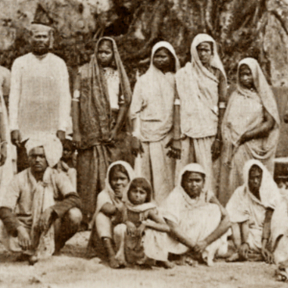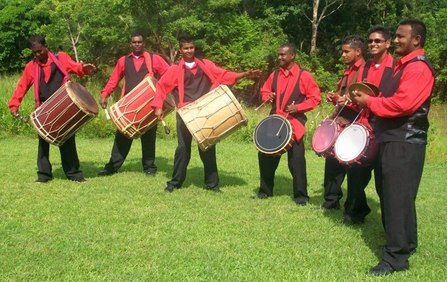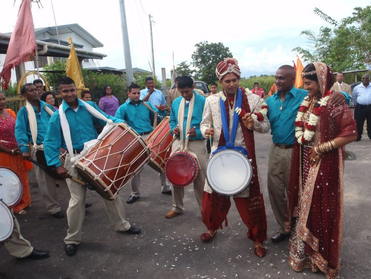India in the Caribbean:
The Story of Indian Indentureship
|
When slavery was abolished in British colonies in the 1830s, plantation owners were faced with a problem: former slaves wanted to be paid, but paying them the wages worth their backbreaking work would force profits from sugar, cocoa, and other commodities to drop drastically. With the reluctant blessing of the British government, plantation owners devised a new system of indentured--or contracted--labor that would bring thousands of people from various parts of the British Empire to the plantations of Africa, the Pacific islands, and the Caribbean. The wages of these indentured workers were pitifully low, so much so that some historians have characterized indentureship as just a different form of slavery.
|
|
|
As described by Trinidadian historian Walton Look Lai in his book Indentured Labor, Caribbean Sugar, people from all around the world, including China, Indonesia, Africa, and parts of the middle East, came to the colonies as indentured workers. By far, however, Indians were the most numerous to sign up. The first Indians cam to the Caribbean to work in Guyana in 1838, and in 1845 the first shipload of Indians came to work in Trinidad. From this point until the indenture system was outlawed in 1917, nearly 150,000 men, women, and children from India had arrive for work in Trinidad. Though working conditions were often deplorable, workers were threatened with jailtime (or worse) for absconding from work. Nonetheless, only a small percentage returned home after their five-year period of indenture was up. Those who stayed often settled on rural lands where they worked hard to provide for their families and continue traditions from home.
Today, Indo-Trinidadian culture is a vitally important part of the everyday life of Trinidad & Tobago with people of Indian descent making up nearly half of the country's population. Indo-Trinidadian food, clothes, religions, some aspects of language, and of course music are conspicuous indications that Indian families have honored and held dear the traditions of their forebears. Tassa is one of these traditions. |
Basics of the Tassa Ensemble
Tassa is a bowl-shaped drum that is hung from the neck and played with two thin and very flexible sticks. In Trinidad, tassa is always accompanied by the dhol (a double-headed bass drum played with one stick and one open hand) and jhal (a pair of thick brass hand cymbals). It takes at least four players to play all the parts of the ensemble. The "cutter," or lead tassa player, directs the ensemble through a series of standardized taals, or rhythmic calls. Additionally, the cutter adds flair to the music through improvisation, often using rapid-fire rolls and ear-splitting "shots."
The foulé is the accompanying tassa part that consists of standardized ostinato patterns. The bass, jhal, and foulé provide a rhythmic base upon which the cutter improvises. Tassa rhythms are cllaed "hands" and vary greatly, ranging from processional hands played at a moderate walking tempo to very fast, up-beat hands meant for dancing. The drums are not necessarily sacred, but are important for Caribbean Hindu weddings and for the Shi'a Muslim Hosay observance (the local name for Muharram). Tassa is also played for Carnival celebrations, parties, and cultural events of all kinds.
Be sure to check out our video page to get an idea of the expressive range of the tassa ensemble.






